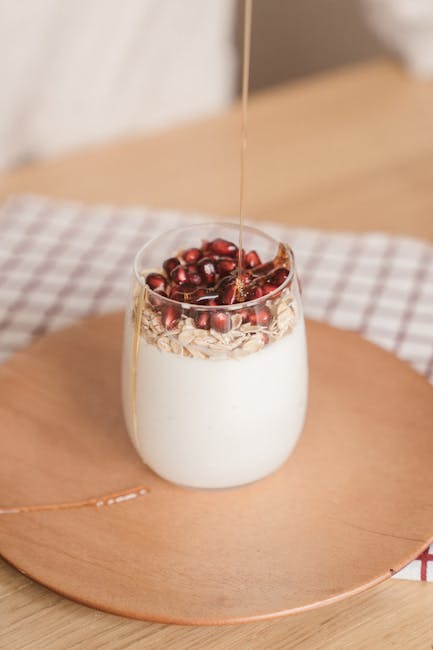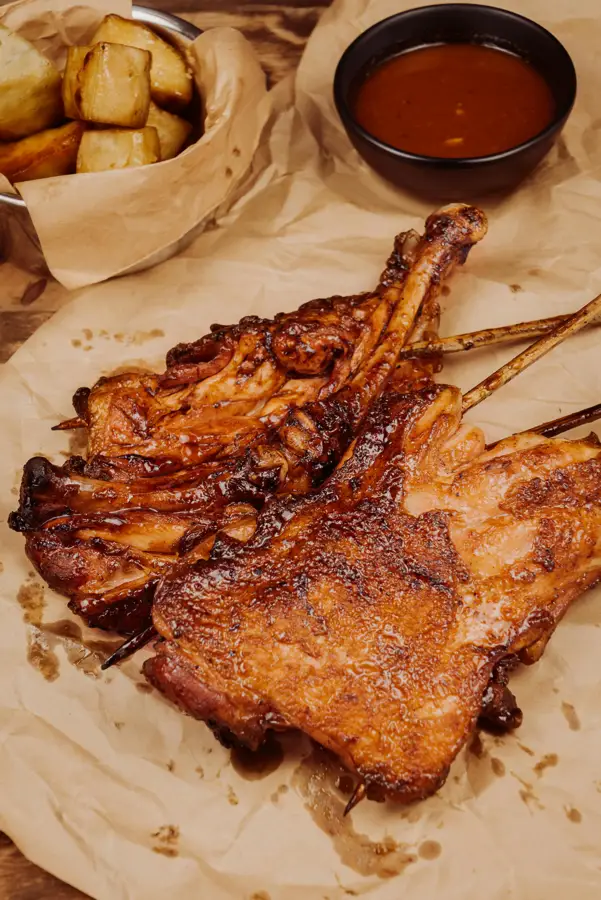Carrots and parsnips, humble root vegetables with surprisingly rich histories, have graced tables across the globe for centuries. While their exact origins are debated, carrots, believed to have originated in Persia, were initially cultivated for their leaves, not their roots. Wild carrots boasted a thin, white or purple root, a far cry from the vibrant orange we’re familiar with today. The development of the sweet, orange carrot we know and love is largely attributed to the Dutch in the 17th century, who selectively bred them for their color and sweetness. Interestingly, the United States is the world’s largest producer of carrots, with over 2 million tons harvested annually.
Parsnips, closely related to carrots and sharing a similar history of cultivation, boast an even longer history. Evidence suggests they were consumed in ancient Greece and Rome, and their popularity continued through the Middle Ages. Unlike carrots, parsnips retained a significant presence in European cuisine throughout the centuries. Their sweeter, nuttier flavor profile made them a staple in many dishes, often used in stews and soups. While their popularity dipped somewhat in the 20th century, they’ve recently experienced a resurgence, appreciated for their nutritional value and unique flavor. Parsnip production, while globally smaller than carrots, is still significant, with many countries cultivating them for both domestic consumption and export.
The combination of carrots and parsnips, often roasted or braised, represents a harmonious blend of sweetness and earthiness. In this recipe, we elevate these vegetables with a simple yet elegant honey glaze. Honey, a natural sweetener with a long and storied history, adds a touch of sophistication and complexity. Used for centuries as a food source and a medicinal ingredient, honey holds cultural significance in many societies, appearing in religious ceremonies and folklore. The honey glaze, with its rich amber color and subtle sweetness, perfectly complements the natural sweetness of the carrots and the subtle spice of the parsnips, creating a dish that is both visually appealing and deliciously satisfying. This recipe showcases the versatility of these often-underestimated root vegetables, transforming them into a culinary delight.
Ingredients and Measurements
This recipe yields approximately 4 servings of delicious honey-glazed carrots and parsnips. Accurate measurements are crucial for achieving the perfect balance of sweetness and savory notes. We recommend using a kitchen scale for the most precise results, especially when measuring the root vegetables.
Carrots: You’ll need 1 pound (450g) of carrots. Choose fresh, firm carrots with vibrant orange color. Avoid carrots that are soft, shriveled, or have blemishes. Tip: For even cooking, aim for similarly sized carrots. Feel free to use a mix of baby carrots and larger carrots, but ensure that they are all roughly the same length after peeling and chopping. If using larger carrots, you might need to adjust the cooking time slightly longer.
Parsnips: Use 1/2 pound (225g) of parsnips. Parsnips should be firm and have a smooth, pale cream to yellowish-brown skin. Similar to carrots, select parsnips of relatively uniform size for even cooking. Note: Parsnips have a slightly stronger flavor than carrots. If you prefer a milder flavor, you can reduce the quantity to 1/4 pound (112g).
Butter: We’ll use 2 tablespoons (30g) of unsalted butter. Unsalted butter allows for better control over the saltiness of the dish. If using salted butter, reduce the amount of added salt accordingly.
Honey: 2 tablespoons (30g) of honey adds a beautiful sweetness and glaze. Choose a honey with a distinct flavor profile, such as wildflower or clover honey, to enhance the overall taste of the dish. The type of honey you select will subtly change the final flavor outcome.
Soy Sauce: 1 tablespoon (15ml) of low-sodium soy sauce adds a savory depth of flavor and helps balance the sweetness of the honey. Using low-sodium soy sauce allows you to better manage the salt content of the recipe and prevents it from becoming overly salty.
Fresh Thyme: 1 teaspoon (2g) of fresh thyme leaves adds a fragrant herbal note. Fresh thyme provides a superior flavor compared to dried thyme. If using dried thyme, reduce the amount to 1/2 teaspoon (1g).
Salt and Black Pepper: Season generously with salt and freshly ground black pepper to taste. Start with 1/2 teaspoon (3g) of salt and 1/4 teaspoon (1g) of black pepper, then adjust according to your preference. Freshly ground black pepper releases its aroma more readily, enhancing the overall flavor.
Preparation of Vegetables (Washing, Peeling, Chopping)
Before you begin the honey-glazing process, meticulous preparation of your carrots and parsnips is crucial for achieving optimal flavor and texture. We’ll be working with approximately 1 pound of carrots and 1 pound of parsnips for this recipe. Start by thoroughly washing your produce.
Washing: Rinse the carrots and parsnips under cold running water. Use a vegetable brush to scrub away any ingrained dirt or soil, especially if they are organically grown. Pay close attention to the crevices and root ends. Thorough washing removes potential pesticides and ensures a cleaner, more appealing final dish.
Peeling: Once washed, peel the carrots and parsnips using a vegetable peeler. Avoid peeling away too much of the vegetable’s flesh, as this is where many nutrients and flavor reside. Aim for a thin, even peel. For parsnips, especially larger ones, you might find a paring knife helpful for reaching into any crevices.
Chopping: After peeling, chop the carrots and parsnips into uniformly sized pieces. Consistency in size ensures even cooking. For this recipe, aim for roughly 1-inch thick pieces, whether sticks, rounds, or batons. If you prefer a more tender result, you can opt for smaller pieces. Larger pieces will retain more of their bite. A sharp knife is essential for clean cuts and efficient chopping. Using a dull knife can lead to uneven cuts and bruising of the vegetables, affecting their texture and appearance.
Professional Tip: To enhance the visual appeal of your finished dish, consider using a mandoline slicer for uniformly sized pieces, especially if you’re aiming for thinner slices or batons. However, use caution when operating a mandoline as it can be a sharp tool.
Once your carrots and parsnips are washed, peeled, and chopped, you are ready to move on to the next stage of the recipe. Remember, proper preparation is key to a delicious and visually stunning honey-glazed carrot and parsnip dish.
Making the Honey Glaze
The honey glaze is the star of this dish, so let’s make sure it’s perfect! We’ll be creating a rich and subtly complex glaze that balances sweetness with a touch of acidity and savory depth. Begin by gathering your ingredients: 1/4 cup honey (preferably a darker, robust variety like buckwheat or wildflower), 2 tablespoons Dijon mustard, 1 tablespoon apple cider vinegar, 1 tablespoon olive oil, 1 teaspoon ground ginger, and a half teaspoon of ground cinnamon.
In a small saucepan over medium heat, combine the honey, Dijon mustard, apple cider vinegar, and olive oil. Stir gently to ensure everything is well incorporated. Don’t rush this step; you want the ingredients to meld together beautifully. Avoid high heat, as this can scorch the honey and create a bitter taste.
Once the mixture is smooth and begins to simmer, reduce the heat to low. This is crucial for preventing burning and allows the flavors to develop fully. Add the ground ginger and cinnamon. Stir continuously for about 2-3 minutes, allowing the spices to infuse the glaze and release their aromatic oils. The glaze will begin to thicken slightly.
Taste the glaze and adjust the seasoning to your preference. You might want to add a pinch more ginger for a spicier kick, or a touch more vinegar for extra brightness. If you find it too sweet, you can add a tiny splash of water to balance the flavors. Remember that the glaze will thicken further as it cools, so keep this in mind when adjusting sweetness and consistency.
Important note: The glaze will continue to thicken as it cools. If it becomes too thick, you can always add a teaspoon of warm water to adjust the consistency before glazing the carrots and parsnips. Keep a close eye on the glaze while it simmers to prevent it from sticking to the bottom of the pan. A wooden spoon or spatula is ideal for stirring and scraping the bottom of the pan to ensure even cooking.
Once you’ve achieved your desired flavor and consistency, remove the saucepan from the heat. Your delicious honey glaze is ready to be used! Set it aside and prepare your carrots and parsnips for glazing. Remember to let the glaze cool slightly before pouring it over the vegetables to prevent them from becoming too soft.
Roasting the Carrots and Parsnips
This section details the crucial roasting process for achieving perfectly tender yet caramelized carrots and parsnips. We’ll be roasting approximately 1 pound of carrots and 1 pound of parsnips, but you can easily adjust these quantities to suit your needs. Begin by preheating your oven to 400°F (200°C). This temperature is ideal for achieving a good balance of tender interiors and nicely browned exteriors.
First, prepare your vegetables. Peel the carrots and parsnips using a vegetable peeler. Thoroughly wash them under cold running water to remove any lingering dirt or debris. Then, chop the carrots and parsnips into roughly 1-inch thick pieces. Uniform sizing ensures even cooking. Smaller pieces will cook faster, while larger pieces may require additional roasting time. Aim for consistency for optimal results.
Next, toss the chopped carrots and parsnips with 2 tablespoons of olive oil in a large bowl. Using your hands, ensure all the vegetables are evenly coated with oil. This step is key to achieving that beautiful caramelization. The olive oil helps to create a crispy exterior while keeping the interior moist. You can also add a pinch of salt and freshly ground black pepper at this stage to season the vegetables.
Now, spread the oiled carrots and parsnips in a single layer on a large baking sheet. Avoid overcrowding the baking sheet; this will prevent the vegetables from steaming instead of roasting, resulting in a soggy texture. If necessary, use two baking sheets to ensure a single layer. This allows for even heat distribution and optimal browning.
Roast the vegetables for approximately 25-30 minutes, or until they are tender and slightly caramelized. Check for doneness by piercing a piece with a fork. It should easily pierce through the vegetable. If the vegetables are not yet tender, continue roasting in 5-minute intervals until they reach your desired level of tenderness. Keep a close eye on them during the last few minutes of roasting to prevent burning.
Once the carrots and parsnips are cooked to your liking, remove them from the oven and allow them to cool slightly before adding the honey glaze (in the next step). The slight cooling allows the glaze to adhere better to the vegetables, resulting in a more flavorful and evenly coated final product.
Checking for Doneness
Achieving perfectly tender-crisp carrots and parsnips is key to a delicious honey-glazed dish. Overcooked vegetables will be mushy and lack texture, while undercooked ones will be tough and unpleasant. Therefore, accurately checking for doneness is crucial. We’ll be aiming for a texture where the vegetables are easily pierced with a fork but still retain a slight bite.
The cooking time will vary depending on the size and thickness of your carrots and parsnips. For uniformly sized vegetables (approximately ½ inch thick), you should expect a cooking time of around 15-20 minutes for carrots and 20-25 minutes for parsnips. However, always rely on the texture rather than solely on the timer.
Begin checking for doneness after the minimum cooking time has elapsed. Use a fork to pierce a carrot and a parsnip. If the fork slides in easily, but there’s still a slight resistance – a little “give” – then they are perfectly cooked. Avoid piercing the vegetables too forcefully, as this can damage their structure.
If the vegetables are easily pierced and feel very soft, they are overcooked. In this case, remove them from the heat immediately to prevent further softening. You can still salvage the dish by carefully reducing the glaze to thicken it and serve the vegetables with this concentrated sauce. The slightly softer texture will be less noticeable with a richly flavored glaze.
Conversely, if the fork encounters significant resistance when piercing the vegetables, they need more cooking time. Continue cooking in 2-3 minute intervals, checking for doneness after each addition. Remember that parsnips generally require a longer cooking time than carrots due to their denser texture. Adding a little more liquid, such as a tablespoon of water or broth, can help prevent them from drying out during the extended cooking time.
For larger or irregularly shaped vegetables, you may need to adjust the cooking time accordingly. Thicker pieces will naturally require longer cooking times. In this case, it’s best to cut them into more uniform pieces before cooking to ensure even cooking throughout. Always prioritize the texture over a strict adherence to a time guideline. Taste testing a small piece can also help you judge the doneness and sweetness of the vegetables.
Once the carrots and parsnips are cooked to your liking, remove them from the heat and let them sit for a couple of minutes. This will allow the glaze to slightly thicken and coat the vegetables more evenly. Then, serve immediately and enjoy your perfectly cooked honey-glazed carrots and parsnips!
Serving Suggestions
These honey-glazed carrots and parsnips are incredibly versatile and pair well with a wide range of dishes. Their sweetness complements both savory and slightly sweet main courses, making them a perfect addition to your meal planning.
As a side dish: A classic serving suggestion is alongside roasted meats. Consider serving 1 cup of the glazed carrots and parsnips per person alongside 4-6 ounces of roasted chicken, pork loin, or lamb. The sweetness of the glaze cuts through the richness of the meat, creating a balanced flavor profile. For a heartier meal, try serving 1.5 cups per person.
With fish: The delicate sweetness of the carrots and parsnips complements flaky white fish beautifully. Serve approximately ¾ cup per person alongside pan-seared cod, baked haddock, or grilled salmon. The glaze adds a lovely touch of color and flavor to the plate, enhancing the overall presentation.
As part of a larger vegetable medley: Don’t limit yourself to serving them alone! Combine your glazed carrots and parsnips with other roasted vegetables like Brussels sprouts, broccoli, or sweet potatoes for a vibrant and nutritious side dish. Aim for a ratio of approximately 1 cup of the glazed carrots and parsnips to 1.5 cups of other roasted vegetables per person. This creates a balanced and visually appealing combination.
In a grain bowl: For a more substantial and complete meal, incorporate the glazed carrots and parsnips into a grain bowl. Combine 1 cup of cooked quinoa or brown rice with 1 cup of the glazed vegetables, along with other ingredients such as roasted chickpeas, grilled halloumi cheese, and a sprinkle of fresh herbs. This makes a fantastic vegetarian or vegan option.
Temperature considerations: Serve these glazed carrots and parsnips either warm, straight from the oven, or at room temperature. While warm, they retain their optimal sweetness and glaze consistency. However, at room temperature, they are still delicious and can be easily incorporated into salads or cold dishes.
Garnish suggestions: To elevate the visual appeal of your dish, consider garnishing with fresh herbs like parsley or thyme. A sprinkle of toasted nuts, such as pecans or walnuts, adds a delightful crunch and complements the sweetness of the glaze. A drizzle of extra virgin olive oil adds richness and shine.
Remember to adjust quantities based on the number of servings and the overall composition of your meal. Experiment with different combinations to discover your favorite way to enjoy these delicious honey-glazed carrots and parsnips!
Recommendations
For the best flavor and texture, ensure your carrots and parsnips are peeled and sliced evenly. This will allow for uniform cooking and glazing. Aim for slices approximately ¼ inch thick. Overly thick slices may remain slightly firm in the center, while excessively thin slices might burn or become mushy.
Serving suggestions are plentiful! These honey-glazed carrots and parsnips are delicious as a side dish with roasted meats, such as chicken, pork, or lamb. They also pair beautifully with grilled fish or poultry. Consider serving them alongside a hearty grain like quinoa or brown rice for a complete and balanced meal. A sprinkle of fresh thyme or rosemary just before serving adds an extra layer of aromatic complexity.
Storage: Leftovers can be stored in an airtight container in the refrigerator for up to 3 days. Their flavor may intensify slightly over time. Reheat gently in a pan on the stovetop or in the microwave, adding a splash of water or broth if needed to prevent dryness. Avoid freezing these glazed vegetables, as the texture may change upon thawing.
Complementary Dishes: The sweetness of the honey glaze complements savory dishes perfectly. Consider pairing them with dishes featuring strong herbs and spices, such as Moroccan tagines, roasted root vegetables with cumin and coriander, or even a simple salad with a tangy vinaigrette to cut through the sweetness. The earthy tones of the carrots and parsnips also make them a great addition to a Thanksgiving or Christmas spread.
Nutritional Information (per serving, approximate): The exact calorie and nutritional content will vary depending on the quantity of honey and other ingredients used. However, a typical serving provides approximately 150-200 calories, with a good source of fiber, vitamin A (from carrots), and vitamin C. This is a rough estimate and precise values should be calculated based on your specific recipe and serving size. Please consult a nutrition calculator for accurate information based on your recipe’s ingredients and quantities.





